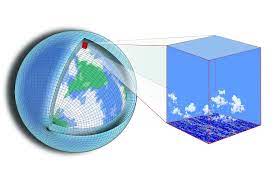Complex Systems and Limitations:
Analytical Challenges: Many real-world problems involve intricate equations or systems that lack analytical solutions due to complexity or non-linearity.
Computational Power: Numerical methods leverage computational power to approximate solutions for these complex systems, enabling feasible problem-solving.

Applications in Science and Engineering:
Physical Modeling: Numerical methods aid in modeling physical phenomena, simulating fluid dynamics, structural analysis, and electromagnetics, among others.
Optimization and Decision-Making: They facilitate optimization algorithms crucial in decision-making processes, like route optimization in logistics or financial modeling.

Financial Mathematics and Risk Analysis:
Portfolio Management: Numerical techniques help in portfolio optimization, risk assessment, and pricing of complex financial instruments.
Risk Modeling: Monte Carlo simulations and other numerical methods assist in risk modeling and management for businesses and financial institutions.

Medicine and Biomechanics:
Medical Imaging: Techniques like computed tomography (CT) and magnetic resonance imaging (MRI) rely on numerical methods for image reconstruction.
Biomechanical Modeling: Simulating biological systems aids in understanding physiological processes, optimizing prosthetics, and studying movement mechanics.

Climate Modeling and Environmental Sciences:
Climate Prediction: Numerical simulations play a crucial role in climate modeling, weather forecasting, and studying environmental changes.
Ecological Impact Assessments: They help assess the impact of human activities on ecosystems, aiding in environmental policy-making.

Challenges and Innovations:
Accuracy and Precision: Ensuring accuracy in numerical approximations remains a challenge, leading to continuous advancements in algorithms and computing technologies.
Computational Efficiency: Developing faster algorithms and optimizing computational resources is a constant pursuit in numerical methods.

Conclusion:
Numerical methods form the backbone of problem-solving across diverse disciplines, enabling researchers, engineers, scientists, and policymakers to tackle complex challenges. Their significance lies in their ability to bridge the gap between theoretical understanding and practical applications, driving innovations and advancements in various fields.
Understanding and leveraging these methods not only expand our capabilities but also pave the way for novel discoveries and solutions to some of the most pressing global challenges.
Would you like more insights into specific applications of numerical methods in a particular field or their role in cutting-edge technological advancements?



You must be logged in to post a comment.